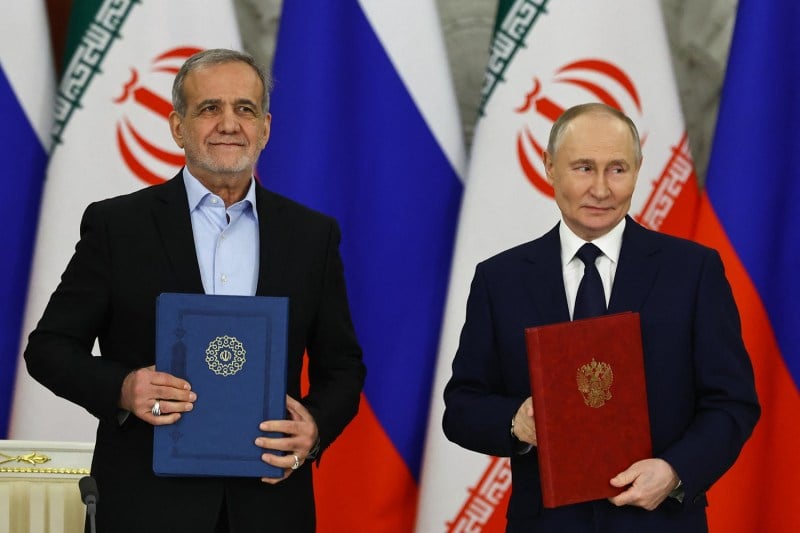Iranian President Masoud Pezeshkian and Russian President Vladimir Putin signed a landmark strategic partnership treaty on Friday. The agreement signals a new phase of cooperation between two nations burdened by heavy international sanctions.
Both leaders hailed the treaty as a “breakthrough” during a joint press conference in Moscow. The pact spans multiple areas, including politics, security, trade, transportation, and energy. President Putin emphasized its importance, calling it pivotal for the “stable and sustainable development” of Russia, Iran, and the wider region.
Kremlin sources revealed that the treaty is expected to enhance military, political, and trade relations. However, specific details about its provisions remain undisclosed.
President Pezeshkian described the treaty as a “new chapter” in Iran-Russia relations. The focus on trade reflects growing economic collaboration between the two nations in response to Western sanctions. Both countries have used their partnership to counter global isolation.
Earlier this week, Russian Foreign Minister Sergei Lavrov praised the treaty’s “constructive” nature. He noted that the pact aims to strengthen the global standing of both nations and their allies.
The agreement builds on a 2001 accord, periodically renewed over the years. This new treaty is reportedly designed to last 20 years, solidifying the Tehran-Moscow alliance as both nations seek to expand their global influence.
Trade between Iran and Russia has surged recently. Iran has supplied military hardware, including Shahed drones, to Russia. Western officials and Ukraine allege these drones are being used in the ongoing war in Ukraine.
The partnership has alarmed Western powers, which view the growing Tehran-Moscow alliance as a destabilizing force in geopolitics. Since Russia’s invasion of Ukraine in 2022, the Kremlin has increasingly relied on Iran as a strategic ally. This closer alignment has heightened tensions with the West.
President Putin’s foreign policy focuses on building alliances with nations like Iran, China, and North Korea. This strategy seeks to challenge US-led global dominance. For Iran, the treaty aligns with its goal of expanding influence under mounting Western pressure.
The agreement comes as Iran faces several foreign policy challenges. These include setbacks in Syria after the fall of President Bashar al-Assad, a key Iranian ally, and the weakening of Hezbollah following conflict with Israel.
The treaty also precedes the inauguration of US President-elect Donald Trump, known for his hardline stance against Tehran. Trump previously withdrew from the Iran nuclear deal and has threatened swift action to limit Iran’s regional influence.
This treaty marks a significant geopolitical shift. By deepening ties, Iran and Russia challenge Western efforts to isolate them. The partnership reflects a broader strategy to reshape global power dynamics.
The timing of the agreement, just before Trump’s return to office, is deliberate. Both nations anticipate heightened pressure from the US and seek to preemptively strengthen their positions.
For the region, this development introduces new complexities. Iran and Russia’s alliance may encourage closer ties with other countries opposed to Western policies. However, it could also escalate tensions with nations aligned with the US, further destabilizing an already volatile landscape.


